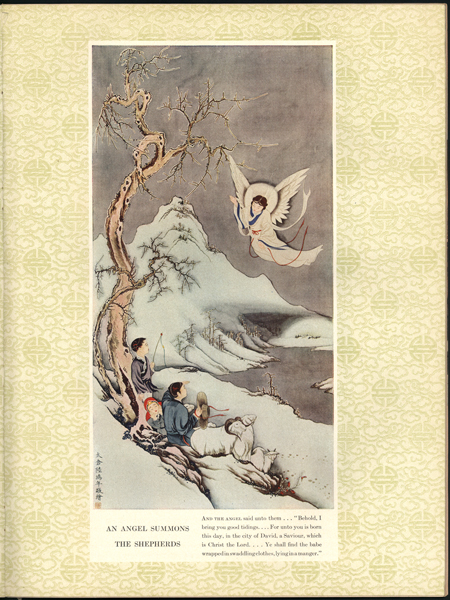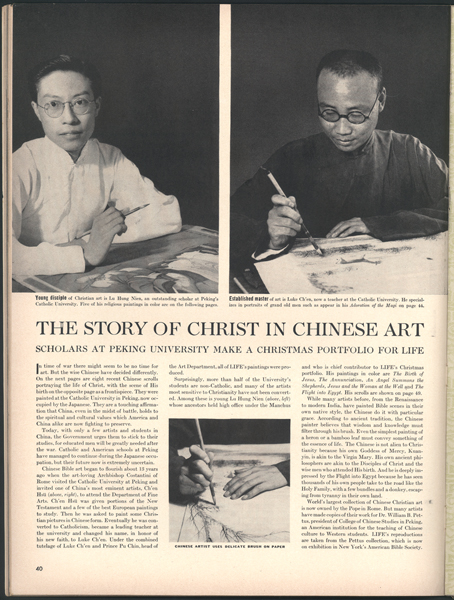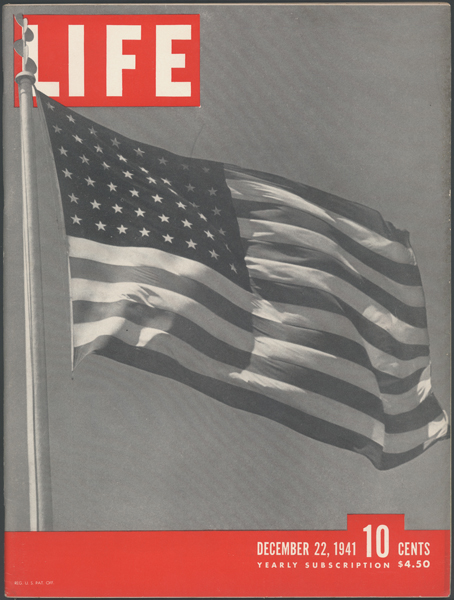Lu Hong Nian’s “An Angel Summons the Shepherds,” depicting the angelic Annunciation to the shepherds of Jesus’s Nativity using distinctly Chinese features, is one of eight silk scroll paintings LIFE magazine commissioned to accompany its article “The Story of Christ in Chinese Art.” Printed on December 22, 1941, the article aimed to marshal wartime public opinion in support of China, now a U.S. ally, by pointing to Chinese Christian artists whose fates remained uncertain under Japanese occupation. This positive media, along with Chinese Americans’ own war efforts, initiated a shift in public perception of Chinese living in the United States.
The Western missionaries who encouraged the production of Christian art in China hoped that using familiar traditional art forms to convey Biblical messages would help Christianity gain broader acceptance among the Chinese population. In the 1920s, under the patronage of the Archbishop Constantini, the first diplomatic envoy sent by the Pope to China, the Roman Catholic Church initiated a new movement to promote indigenous Christian art. Constantini cultivated the talents of the young Chinese painter Ch’en Hsu (or Chen Yuan De, later baptized Luke), who eventually went on to teach a whole generation of young artists at Beijing’s Catholic Furen University, where Lu Hong Nian attended as an art student. Chinese artists’ portrayal of Biblical scenes departed from convention in that people did not usually figure prominently as subjects in traditional Chinese painting, which centered landscapes. However, to the artists, painting in their own style allowed them to interpret and express Christianity from a Chinese perspective and their works offered Chinese religious devotees alternative images to the fair-skinned Jesus of Euro-American artistic rendering.


